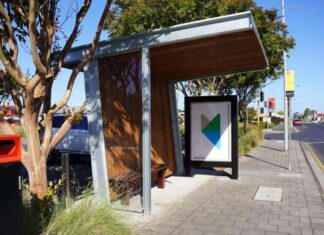
I WAS 14 years old when the war started and tried to enlist immediately.
But my dad always had the same answer – you’ll get a boot up the arse.
There were many Yanks out at a training camp at the Mount Gambier Airport where we kids used to go on Saturday mornings.
We would get a ride from Kongorong and at the airport the Yanks would ask “where’s your uniform guy, why are we out here fighting your war?”
On my 18th birthday, dad gave in and I enlisted the same day.
I was the happiest guy in town, I’d grown up at last.
At the time Mount Gambier had a group called Man Power Officers.
If some businesses were short of labour, like a cheese factory, you were sent there to help and that’s what happened to me.
I worked in the Kongorong cheese factory for three months, what a bummer.
On December 18, 1943, I again enlisted in the army and on the train to Adelaide I met up with another chap named Max Day.
In Wayville, I got my first uniform and then went to fill up my palias with straw.
The palias was a hessian bag about as long as a single mattress with an opening at one end.
This had to be filled from a mountain of straw usually located close to the barracks.
It made sleeping on the concrete floor a little more pleasant.
Following rookie training, I left Adelaide by train to report to the New South Wales army camp in Cowra for six months, from where I went to Bathurst.
From there I went to Queensland and was sent to the jungle warfare training camp at Canungra for a four-week course.
It was tough walking over wire bridges above the river with one wire under your boots, the other above your head.
Out in the middle, you would get a wobble.
We were jumping off platforms 30 feet high and with full packs including rifles into the river.
After leaving Canungra, I was transferred to Atherton Tablelands to join my unit, which was the 15th Brigade, 3rd Division, 57/60 Battalion.
The boys had just come back to the mainland from New Guinea after some very big battles.
Quite a lot got killed.
We were classed as kids by them. They looked like old men to us, but once in action on patrols we were accepted and became great mates.
After about two months, one digger out of each platoon was chosen to be in the advance party to go to Bougainville (Cape Torokina).
I was the one from my platoon – 15C Company.
We had to clear an area for the rest to come and make camp.
The advance party left Australia on December 23 by ship, the merchant navy ship called the Duntroon and we had Christmas on board.
The rest of our troops did not come until a week later and we started with jungle warfare training.
The jungles were very thick.
The heat was so intense your shirt and trousers were sopping wet in no time and then the rain usually came by 4pm.
There were rivers everywhere.
Hell it was hot!
By April 10, 1945, we were involved in our first small engagement with the enemy.
We were out on patrols every day.
Some days we would find Japanese and their camps and give map references to the artillery, who would do their best to clean them out.
We only had one big engagement in that time on what they called Slater’s Knoll.
An estimated 300 Japanese were killed.
Practically every day we were doing patrols, sitting on the side of main tracks the Japanese were using, just waiting to ambush them.
You could hear them coming.
They always made lots of noise, cans rattling and loud talking.
But it was not all that easy as we were caught out many times ourselves.
When we encountered large numbers of Japanese, between 60 and 80 soldiers, we had a problem and the battle could last for up to two hours or more.
The Japanese were mostly dug in and we were not.
They would use everything against us.
They had a beautiful knee mortar, very effective with red hot metal that wounded a lot of our guys, including myself.
But we never retreated, we always went forward.
We had 33 diggers killed in New Guinea.
In Bougainville, we had 31 killed and 104 wounded.
Some had minor wounds and they stayed on duty.






